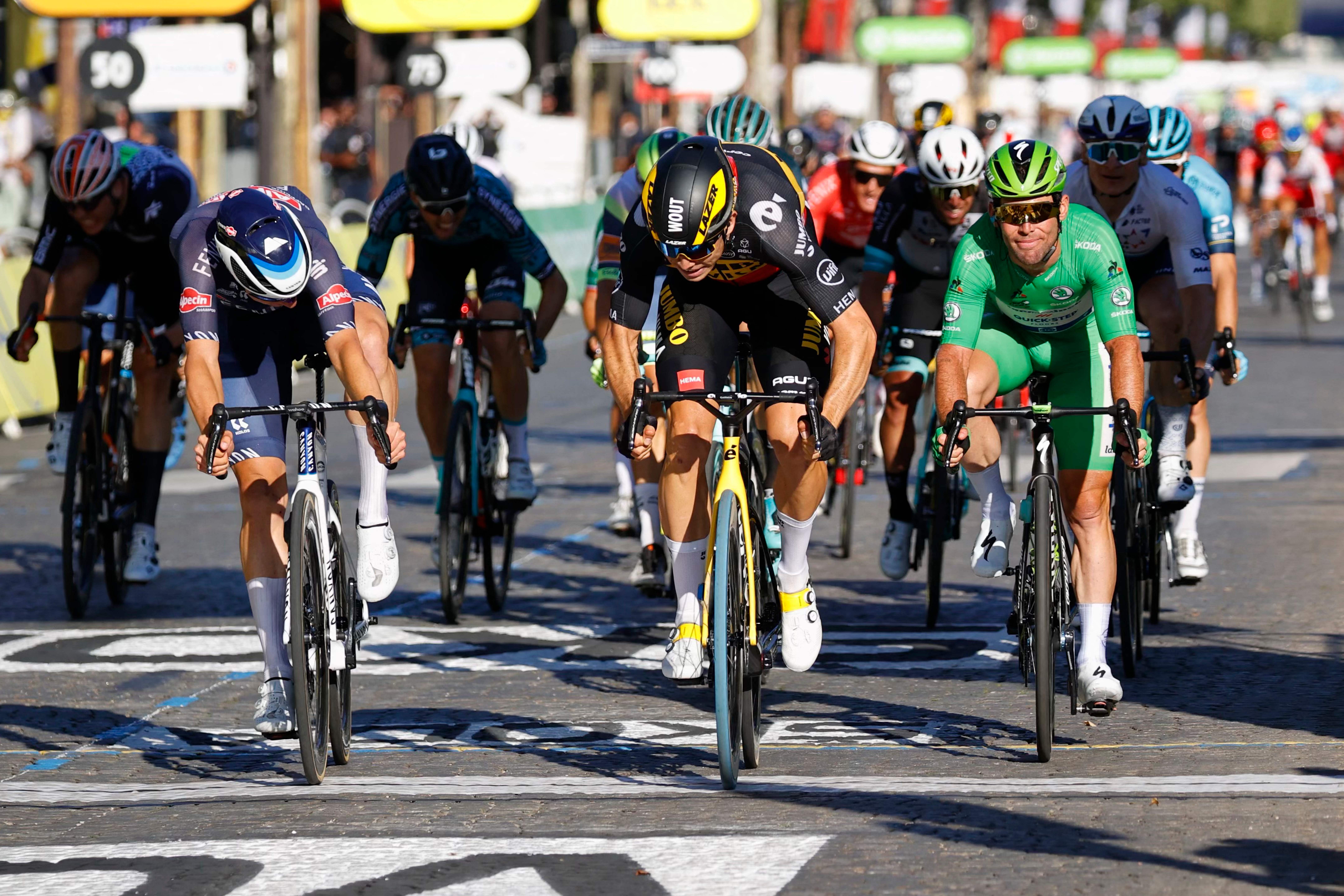
Two former winners of the Champs-Elysées dash on the Tour de France have criticised the redesigned route for the ultimate stage of biking’s largest race, introduced on Wednesday by organisers ASO.
Wout van Aert (Visma-Lease a Bike), who triumphed in Paris in 2021, stated it was “harmful” so as to add the three ascents of the Côte de la Butte Montmartre, which characterised final 12 months’s Paris Olympic Video games highway race, to the standard procession stage.
Regardless of the extra Classics-style route probably benefiting somebody like Van Aert, who was one of many strongest on the brief climb alongside Mathieu van der Poel (Alpecin-Deceuninck), and whose teammate Remco Evenepoel gained the gold medal for Belgium, he expects the completely different peloton measurement to be the important thing drawback.
“I am not likely a fan of it. I believe it’ll be a harmful stage,” Van Aert informed Sporza, talking on the Giro d’Italia. “The course is clearly one thing that fits me, particularly when that final climb is 6km from the end. That opens up views for traditional riders like me.
“However it ignores the truth that we arrived there in the course of the Video games with a peloton of fifty riders and now with a complete Tour peloton, the place many classification riders nonetheless have one thing to defend. I count on chaos, I believe it is a disgrace that we’ll search that out.”
Regardless of the unimaginable spectacle, the place an anticipated 500,000 followers got here out to look at the Olympic Video games highway race, Van Aert thinks the security side is paramount and never being prioritised.
“I perceive that the organisation thought ‘That appears cool, we must always attempt to use that,'” he stated. “However lately, security has more and more change into a problem, and this alternative for Montmartre ignores this.”
The newest race content material, interviews, options, opinions and professional shopping for guides, direct to your inbox!
Compatriot and 2022 dash winner on ‘essentially the most well-known avenue on this planet’, Jasper Philipsen (Alpecin-Deceuninck) has a equally adverse opinion, together with his probabilities of repeating victory on the cobblestone avenue being diminished.
“As a sprinter, it is clearly a disgrace to see this stage change. It had change into an impressive custom,” Philipsen informed L’Equipe.
“The stage will change into considerably extra demanding for the sprinters, just because there will probably be extra riders able to profitable it. However that does not imply {that a} sprinter can not win it.”
Philipsen was much less within the security side, acknowledging how any potential chaos relies upon largely on how the GC state of affairs is firstly of the ultimate day. Nonetheless, he did notice how encouraging an opportunity to maneuver up on the ultimate day, with Montmartre included, breeds extra threat.
“An necessary issue going into this closing stage would be the classification and the time gaps between the general contenders. If every part stays shut, the stress stage within the peloton will certainly enhance, particularly as we method Montmartre,” he stated.
“Not one of the total contenders will need to lose even a second, because the stage presents a closing alternative to maneuver up the highest 10 and achieve beneficial seconds.
“In earlier years, the general groups may simply get pleasure from a extra relaxed day, however now they’re going to have to remain fully centered till the top. As soon as once more, it will change the general stress within the peloton.”
Earlier this week, two-time Tour winner Jonas Vingegaard criticised the thought from a security perspective, whereas Evenepoel has additionally beforehand voiced his doubts about including the Montmartre climbs.
Tour de France race director Christian Prudhomme defended the organiser’s resolution to create extra of a spectacle on stage 21, citing preliminary adverse responses to one of many Tour’s most iconic climbs, the Tourmalet, was first included as proof that constructing the “legend” of the race requires some threat.
“It was apparent to us that we needed to do one thing large for the fiftieth anniversary of the primary arrival on the Champs-Elysées,” Prudhomme informed Sporza.
“It will additional enhance the status of the Tour everywhere in the world. It can enable biking to additional construct its legend.
“When Henri Desgrange (the driving drive behind the primary Tour – Ed.) first included the Tourmalet and the Pyrenees within the route in 1910, not everybody was thrilled. Now they’re a part of the legend of the Tour. We should proceed to construct on that legend.”
Whereas the Rue Lepic and Montmartre’s inclusion into the Tour will probably be a function of 2025 and an enormous speaking level forward of a probably chaotic closing day, it is unclear but whether or not the slim streets of northern Paris will change into a mainstay.
However Prudhomme’s pursuit of “legend” and wanting to make sure “the fantastic uncertainty of the game will return” recommend that one of these closing stage could possibly be right here to remain.
He needs somebody, like Bernard Hinault did in 1979 and 1981, to win in France’s capital carrying the yellow jersey, closing out the Tour de France in type. Nonetheless, he did admit that this was a part of “a loopy dream.”



